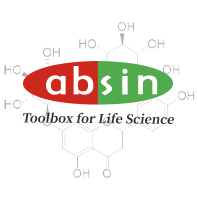Product Details
Product Details
Product Specification
| Usage | I. Procedure (for reference only): 1. Fix cell and bone marrow smears with PAS fixative for 10-15 minutes. 2. Rinse the fixative with distilled water and air-dry the sections. 3. Add an oxidizing agent dropwise and oxidize at room temperature for 15-20 minutes. Rinse twice with distilled water, 2 minutes each. 4. Add or immerse in Schiff stain, cover, and stain in a dark place at room temperature for 10-20 minutes. 5. (Optional) Rinse twice with sodium sulfite solution, 2 minutes each. 6. Rinse with running water for 5 minutes (primarily for microscopic observation). 7. Add Mayer's hematoxylin stain dropwise and counterstain for 1-2 minutes. Rinse with water, air-dry, and examine under a microscope. | |||||||||||||||||||||||
| PAS-positive substances (glycogen or polysaccharide) | Red or purple-red | |||||||||||||||||||||||
| Cell nucleus | Blue | |||||||||||||||||||||||
| Description | Glycogen staining is a common staining method in pathology. McManus first used the periodic acid-Schiff technique in 1946 to visualize mucin. This technique is commonly used to visualize glycogen and other polysaccharides. It can not only visualize glycogen, but also neutral mucinous substances and certain acidic substances, as well as cartilage, pituitary glands, molds, fungi, pigments, amyloid substances, basement membranes, and more. Oxidants can oxidize the 1,2-ethylene glycol groups in carbohydrates and related substances, converting them to dialdehydes. The aldehydes then combine with Schiff's reagent to form a fuchsin compound, producing a purple-red color. Because oxidants can also oxidize other intracellular substances, careful selection of the oxidant concentration and oxidation time is crucial. This ensures that the oxidant groups are oxidized to aldehydes without overoxidation. Glycogen PAS Staining Solution (for cells only) is characterized by the use of unique formula technology, which greatly enhances the staining effect; stable performance and strong specificity; simple operation, only takes 1 hour; lower concentrations of oxidants and hematoxylin, more suitable for staining cells and ultra-thin tissue sections; no hydrochloric acid and ethanol differentiation steps. Product components:
|
|||||||||||||||||||||||
| General Notes | 1. The oxidizing time should not be too long. The optimal oxidation temperature is 18-22°C. 2. Avoid excessive sunlight and air when using oxidizing agents and Schiff stain. It is best to remove the oxidizing agent and Schiff stain 30 minutes before use and allow them to return to room temperature. Use in a dark place away from light. 3. The duration of exposure to the oxidizing agent and Schiff stain is crucial and should be determined based on the thickness of the section and the type of cell or tissue. 4. For routine sections, it is recommended to use glycogen PAS stain, as it contains relatively high concentrations of oxidizing agent and hematoxylin solution. 5. For your safety and well-being, please wear a lab coat and disposable gloves when handling. | |||||||||||||||||||||||
| Storage Temp. | Store at 2-8℃, away from light. Valid for 6 months. |


